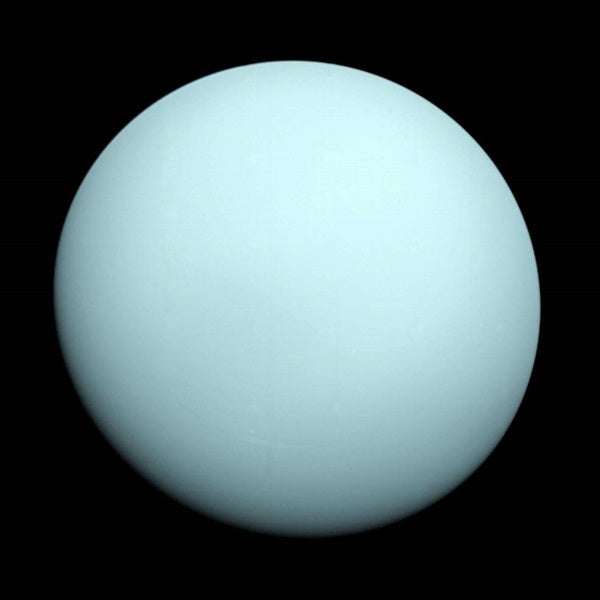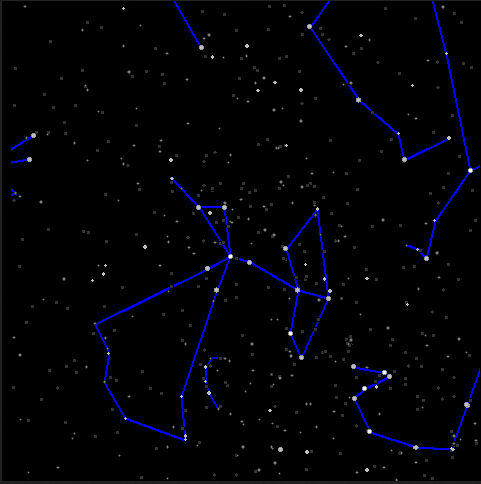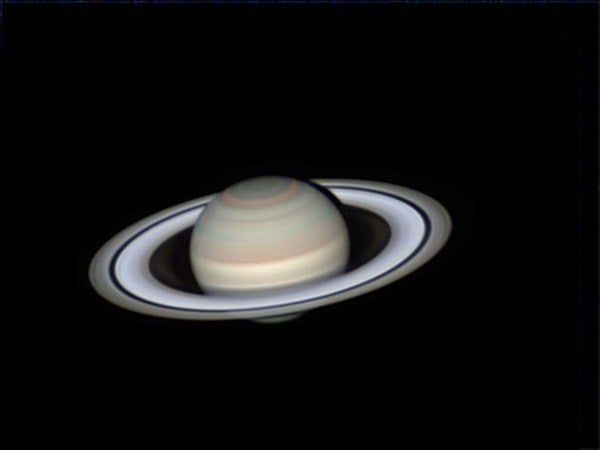Friday, July 29
- Uranus’ eastward motion against the background stars comes to a halt at 10 p.m. EDT. This so-called stationary point marks the beginning of the best period to observe the outer planet. Uranus rises before midnight local daylight time and appears more than halfway to the zenith in the southeastern sky as morning twilight commences. The magnitude 5.8 planet lies in Pisces, 2.7° due north of magnitude 4.8 Mu (m) Piscium. A telescope reveals Uranus’ blue-green disk, which spans 3.6″.
Saturday, July 30
- Pluto reached opposition and peak visibility early this month, and it remains a tempting target all night. It glows dimly at magnitude 14.1, however, so you’ll need an 8-inch or larger telescope with good optics to spot it visually. Pluto currently lies in northeastern Sagittarius, some 0.8° west-southwest of 3rd-magnitude Pi (p) Sagittarii and 0.6° northeast of 4th-magnitude Omicron (o) Sgr. See “The quest for distant Pluto” in the July Astronomy for complete details on finding this world.
Sunday, July 31
- The two inner planets lurk low in the western sky shortly after sunset all week. If you scan the horizon through binoculars 30 minutes after sundown, you should pick up Venus standing just 3° high. It shows up only because in shines so brightly, at magnitude –3.9. Mercury appears 6° above the horizon but will be harder to see because it glows more dimly at magnitude –0.2. And if you have a haze-free sky, you might spot the 1st-magnitude star Regulus between the two planets.
Monday, August 1
- Look toward the south-southwest as darkness falls and you can’t help but see Mars. The Red Planet shines brilliantly at magnitude –0.8 — trailing only Jupiter after dusk — against the much fainter background stars of Libra. And it remains visible until it dips below the southwestern horizon after midnight local daylight time. When viewed through a telescope, Mars’ orange-red disk spans 13″ and shows a number of subtle dark markings.
Tuesday, August 2
- New Moon occurs at 4:45 p.m. EDT. At its New phase, the Moon crosses the sky with the Sun and so remains hidden in our star’s glare.
- Evenings this week are a great time to explore the constellation Sagittarius the Archer. This star group lies due south and at peak altitude around 11 p.m. local daylight time, well after the last vestiges of twilight have faded away. The brightest stars within the constellation form the shape of a teapot — a distinctive asterism once you’ve found it. The central regions of the Milky Way pass through Sagittarius, so it’s always worth exploring this area through binoculars or a telescope.
Wednesday, August 3
- This week finds observers caught between the peaks of two nice meteor showers. The Southern Delta Aquariid shower reached maximum the night of July 29/30 and has started to diminish, while the Perseid shower is ramping up in preparation for its peak the morning of August 12. Yesterday’s New Moon means observers can enjoy several hours of Moon-free skies. You can tell meteors from the two showers apart by tracing their paths backward. Southern Delta Aquariid meteors appear to radiate from the constellation Aquarius the Water-bearer while Perseid meteors emanate from Perseus the Hero.
Thursday, August 4
- Although the Moon reached its New phase just two days ago, it has since crept into view in the western sky after sunset. This evening, you can find the 5-percent-lit crescent standing 6° above the horizon and just 2° to Mercury’s left. Binoculars will show the pair nicely in a single field of view.
Friday, August 5
- A slightly fatter crescent Moon stands 1° below Jupiter in this evening’s sky. Look for the soft glow of earthshine — sunlight that has reflected off our planet to the Moon and then back to our eyes — on the 90 percent of Luna that the Sun is not illuminating directly. Jupiter shines brilliantly at magnitude –1.7 and remains a beacon in the western sky after sunset all week. When viewed through a telescope, the giant planet shows a disk that measures 32″ across and features two dark equatorial cloud belts.
Saturday, August 6
- The variable star Algol in Perseus reaches minimum brightness at 5:33 a.m. EDT. If you start watching it late yesterday evening (it rises in the northeast around 10 p.m. local daylight time), you can see its brightness diminish by 70 percent over the course of about five hours as its magnitude drops from 2.1 to 3.4. This eclipsing binary star runs through a cycle from minimum to maximum and back every 2.87 days.
Sunday, August 7
- Although Saturn reached its peak about two months ago, it remains a lovely sight. You can find the planet nearly due south around 9 p.m. local daylight time. Saturn shines at magnitude 0.4 and appears far brighter than any of the surrounding stars in southwestern Ophiuchus. When viewed through a telescope, the planet measures 17″ across while its dramatic ring system spans 39″ and tilts 26° to our line of sight.












